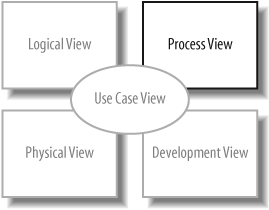Chapter 3. Modeling System Workflows: Activity Diagrams
Use cases show what your system should do. Activity diagrams allow you to specify how your system will accomplish its goals. Activity diagrams show high-level actions chained together to represent a process occurring in your system. For example, you can use an activity diagram to model the steps involved with creating a blog account.
Activity diagrams are particularly good at modeling business processes . A business process is a set of coordinated tasks that achieve a business goal, such as shipping customers’ orders. Some business process management (BPM) tools allow you to define business processes using activity diagrams, or a similar graphical notation, and then execute them. This allows you to define and execute, for example, a payment approval process where one of the steps invokes a credit card approval web service—using an easy graphical notation such as activity diagrams.
Activity diagrams are the only UML diagram in the process view of your system’s model, as shown in Figure 3-1.

Activity diagrams are one of the most accessible UML diagrams since they use symbols similar to the widely-known flowchart notation; therefore, they are useful for describing processes to a broad audience. In fact, ...
Get Learning UML 2.0 now with the O’Reilly learning platform.
O’Reilly members experience books, live events, courses curated by job role, and more from O’Reilly and nearly 200 top publishers.

